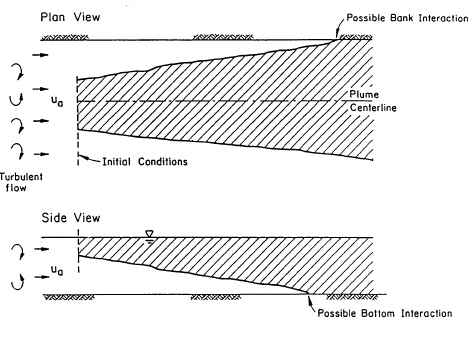The turbulence in the ambient environment becomes the dominating mixing mechanism in the far-field at sufficiently large distances from the discharge point. In general, the passively diffusing flow grows in width and in thickness until it interacts with the channel bottom and/or banks as illustrated in the image on the right.
The strength of the ambient diffusion mechanism depends on a number of factors relating mainly to the geometry of the ambient shear flow and the amount of ambient stratification. From classical diffusion theory, a gradient diffusion processes in the bounded flows of rivers or narrow estuaries can be described by constant diffusivities in the vertical and horizontal direction that depend on turbulent intensity and on channel depth or width as the length scales.
In contrast, wide "unbounded" channels or open coastal areas are characterized by plume size dependent diffusivities leading to accelerating plume growth described, for example, by the "4/3 law" of diffusion. In the presence of a stable ambient stratification, the vertical diffusive mixing is generally strongly damped.


